Adding Korean ICD-10 To Lexicon
Sam Habiel, Pharm.D./ OSEHRA/ 17 May 2019
This post focuses on modifying the VistA Lexicon to contain the Korean ICD-10 system in order for VistA to be usable in Korea for clinical purposes. We end up looking at two different ways in which we can do that.
Statement of the Task
The Korean ICD-10 system used in Korea is known as KCD-7. We wanted to be able to use KCD-7 in CPRS for encounters instead of ICD-10-CM-US. The KCD-7 I was provided only included diagnoses, not the ICD-10 procedures. So my focus was only on diagnoses.
I was supplied a spreadsheet of the KCD-7 codes. Here's a screenshot
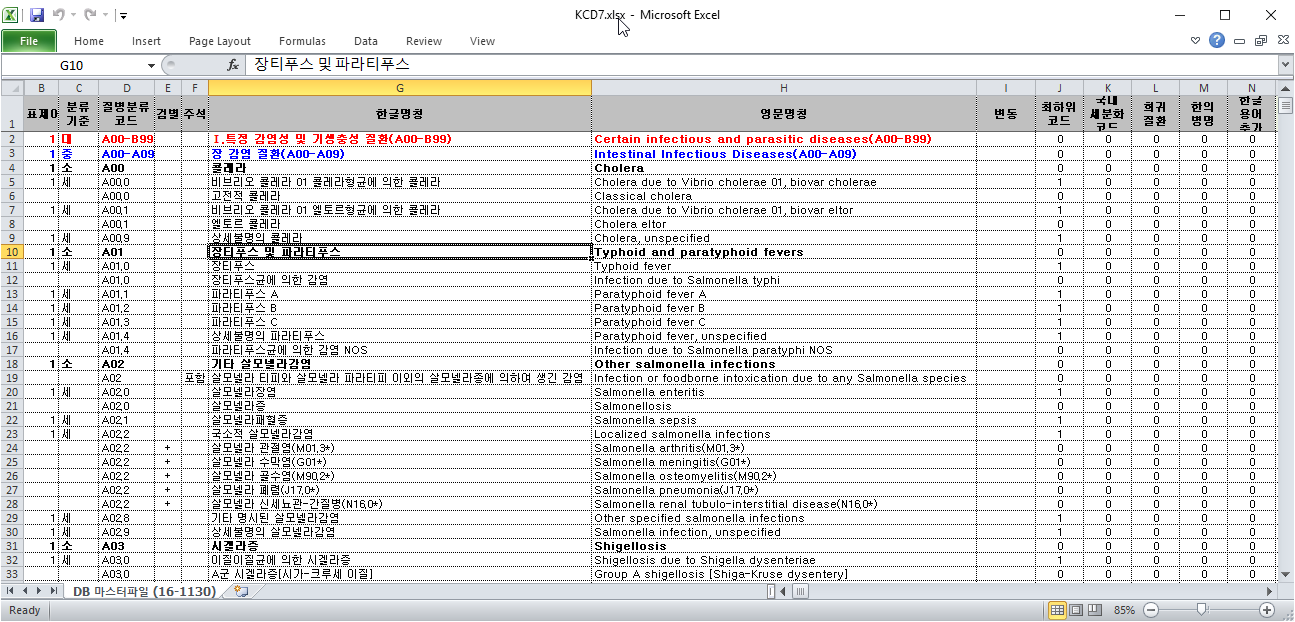
Research on how to Update ICD-10 Codes
Before starting translation of the US entries, I did some research on how the ICD-10 codes are updated. I was lucky in finally receiving (after many attempts) a response to a FOIA request from the VA on the code that updates the Lexicon. I also was lucky in knowing a developer who worked on the Lexicon, who was able to answer some of the questions on some processes not documented in the code.
The FOIA response is a zip file over here. For ease of reference, I extracted all the routines into the reference-lex-icd10-code folder.
Here's a table of my summary exploration of the code.
| Routine | Purpose |
|---|---|
| ^ZZLEXX (MAIN -> CS -> DIA) | Menus |
| LOAD^ZZLEXXAA | Main Driver |
| ZZLEXXAM (PATH, OPEN, CLOSE) | File system operations (paths hardcoded) |
| NTO^ZZLEXXAM | Comparison |
| FILE^ZZLEXXAC | Main Updater |
| EN^ZZLEXMD | Update Counts |
For me, the most important part of this code is FILE^ZZLEXXAC. So here's a detailed breakout of this code.
| Tag | Description |
|---|---|
| CODE | Add ICD-10 Code to File 80 |
| STAT | Update 80/66 (Status Multiple) |
| SHORT | Update 80/67 (Short Description Multiple) |
| LONG | Update 80/68 (Long Description Multiple) |
| LEX^ZZLEXXAD |
|
| SUP^ZZLEXXAS | Applies commonly used medical abbreviations. Adds to
|
| IX^ZZLEXXAC | Indexes the entries in - 80 - 757 - 757.001 - 757.01 - 757.02 - 757.1 |
IEN pre-calculation is rather intriguing. There is no reason that I could see to need to pre- calculate the IENs for the Lexicon. You could just get the next available number. Whatever the reason, the pre-calculation looks like this:
- ICD-10: 5 million to 7 million
- SNOMED-CT: >7 million
- All other terminologies: Next available number; less than 5 million.
Initial Plan and Surpise
Initially, I thought that the task will simply involve the translation of ICD-10; essentially, the replacement of the English Text with Korean text. So that's what I started doing.
What I eventually found out though is that there was a low overlap between ICD-10-CM-US and KCD-7. Only 6286 of 12871 clinically selectable codes in KCD-7 were also clinically selectable in the US. I did not do a thorough investigation, but I think I can divide the issues into three types:
- The US version of ICD-10 is older, and does not contain many codes. E.g. X69.1, which is "Intentional self-poisoning by and exposure to other and unspecified chemicals and noxious substances, residential institution".
- Various US codes specify the number of times something happened (initial, episode, second episode, or more than that). Many of the accident codes (starting with with X) don't have any commonality due to that.
- More detailed sub-specifications. Either the US version is more sub-specified; or the Korean version is. For example, to select a tuberculosis of the lung diagnosis in KCD-7, you need to to select A15.00 (Tuberculous of lung with cavitation, confirmed by sputum microscopy with or without culture), or A15.01 (Tuberculous of lung without cavitation or unspecified, confirmed by sputum microscopy with or without culture). In the US, you only have one code: A15.0, tuberculosis of the lung.
Due to that, doing a translation is not quite feasible. A translation would be a translation of ICD-10-CM-US, which are not the codes being used in Korea. So that left me with two avenues to pursue: Delete the US version and replace it with KCD-7; or inactivate the US version and add KCD-7. The latter option is harder and would have required more investigation; so I opted to doing the easier option: Replace ICD-10 in VistA.
First Attempt to Replace ICD-10
From the table above, you will notice that the code that calls LEX^ZZLEXXAD just creates new entries in all the files for any new codes. So I backtracked from that, assuming that to replace the US ICD-10, I need to delete all the ICD-10 codes add add new ones in their place. I did that, but later discovered that was the wrong way to do it. Later on in this document, I explain why. You can already see from the table below that the deletion process was rather messy.
Deletion
| File | Which Entries (numbers are IENs) |
|---|---|
| 80 (no pointers to Lexicon) | Entries >= 500000 |
| 757.02 (Codes) | Entries 5000000-7000000 |
| → 757.1 (Semantic map) | Pointed to entries from codes |
| → 757.01 (Expression) | " |
| → 757 & 757.001 (Major Concept) | " |
| 757.01 (Expression) | Delete 5000000-7000000 entries that were not previously deleted |
| → 757 & 757.001 (Major Concept) | Pointed to entries from expression |
| 757.1 (Semantic map) | Delete 5000000-7000000 entries that were not previously deleted |
| → 757 & 757.001 (Major Concept) | Pointed to entries from Semantic map |
Adding Codes
| File | Fields |
|---|---|
| 80 (ICD) | .01 (code); 1 (coding system); 66 (status); 67 (short description); 68 (long description) |
| 757 (Major Concept) | .01 (pointer to 757.01) |
| 757.001 (Concept Frequency) | .01 (pointer to 757); others |
| 757.01 (Expression) | .01 = text; 1 = p757 |
| 757.02 (Codes) | .01 = p757.01; 1 = code; 2 = coding system; 3 = p757; 8 = Activation History |
| 757.1 (Semantic Map) | .01 = p757; 1 = 6 ; 2 = 47 |
How to Distribute the Lexicon
Now that we have a new Lexicon, the big question is how to give it to others. I took a look at how the VA distributed their Lexicon. I read through the post-installs of the KIDS builds for the Lexicons, and I saw that they loaded a file system file that comes with the KIDS build containing data that looks like this:
S ^LEX(757,0)="MAJOR CONCEPT MAP^757P^7475423^769194"
^LEXM(757,2)
S ^LEX(757,346250,0)="346250"
^LEXM(757,3)
S ^LEX(757,346251,0)="346251"
^LEXM(757,4)
S ^LEX(757,346252,0)="346252"
^LEXM(757,5)
S ^LEX(757,346253,0)="346253"
^LEXM(757,6)
S ^LEX(757,346254,0)="346254"
^LEXM(757,7)
S ^LEX(757,346255,0)="346255"
^LEXM(757,8)
S ^LEX(757,346256,0)="346256"
^LEXM(757,9)
S ^LEX(757,"B",346250,346250)=""
^LEXM(757,10)
S ^LEX(757,"B",346251,346251)=""This looks very similar to a global output format generated by various M implementations; and it's similar to how KIDS transports globals. But the question was: how did the developers generate this data, which seems to be a journal file dump? I looked at the VA Code that updates the ICD-10 codes, but there were no clues there. I had the fortune to talk to a developer who previously worked on the Lexicon team who told me the answer: there is a small program that compares an update instance of VistA with a reference non-update instance. Based on the comparison, the program generates set and kill statements that will bring up the non-update instance data to match the update instance data. The set and kill statements are distributed in a file (which is what we saw above) that accompanies each Lexicon patch (see the patches here). This patch is eventually installed on the non-update instance, making it now equal to the update instance; and now updating can begin again.
This method, while complicated, is actually the best way to generate the least amount of disk and cpu activity when installing a Lexicon patch into a VistA instance.
I did not get this information until after I created the first release. It was rather simple: Delete all the old Lexicon Globals for the files we modified, and replace them. Here's the list of the globals:
- ICD9
- LEX(757)
- LEX(757.001)
- LEX(757.01)
- LEX(757.02)
- LEX(757.1)
- LEX(757.033)
Unfortunately, this was rather computationally expensive as the globals were very large. The KIDS build file was 1.2GB large; and it took over an hour to install; plus it generated a large amount of Journal file activity.
Problems with First Attempt to Load ICD-10
I had a feeling that the way I was deleting entries in the Lexicon was incorrect because I saw seeing pointer entries being deleted that were not in the ICD-10 number range (if you recall, that's between 5000000-7000000). I had to understand the Lexicon better, so I decided to look carefully at one example of an entry that I deleted that wasn't supposed to be deleted. I used the Fileman pointer tools introduced in Fileman 22.2:
***MAJOR CONCEPT MAP: 1650***
FILE 757.001 (CONCEPT USAGE)
`1650 1650 MAJOR CONCEPT
FILE 757.01 (EXPRESSIONS)
`7939 Anorexia MAJOR CONCEPT
`7940 Food appetite, decreased MAJOR CONCEPT
`7941 Anorexias MAJOR CONCEPT
FILE 757.02 (CODES)
`8461 Anorexia MAJOR CONCEPT
`8462 Anorexia MAJOR CONCEPT
`8463 Anorexia MAJOR CONCEPT
`8464 Anorexia MAJOR CONCEPT
`8465 Anorexia MAJOR CONCEPT
`8468 Anorexia MAJOR CONCEPT
`8471 Food appetite, decreased MAJOR CONCEPT
`5021748 Anorexia (ICD-10) MAJOR CONCEPT
FILE 757.1 (SEMANTIC MAP)
`2510 1650 MAJOR CONCEPT
`2511 1650 MAJOR CONCEPTAs you can see, there are multiple coding systems (codes not shown above; see the tables below) using the same entry in the file Major Concept (#757) to say that all the codes for Anorexia; and all the expressions for saying Anorexia all mean the same thing. Therefore, while deleting the ICD-10 entry in the CODES file was okay to do, deleting all the pointed to entries was not, as they can be pointed to by other entries.
This analysis helped me figure out that the reference VA code that updated ICD-10 is not how it has been done historically; I was essentially following a flawed model.
While there is a more comprehensive diagram for the Lexicon in the VA manual, I decided to make this simple diagram for my and others' edification:
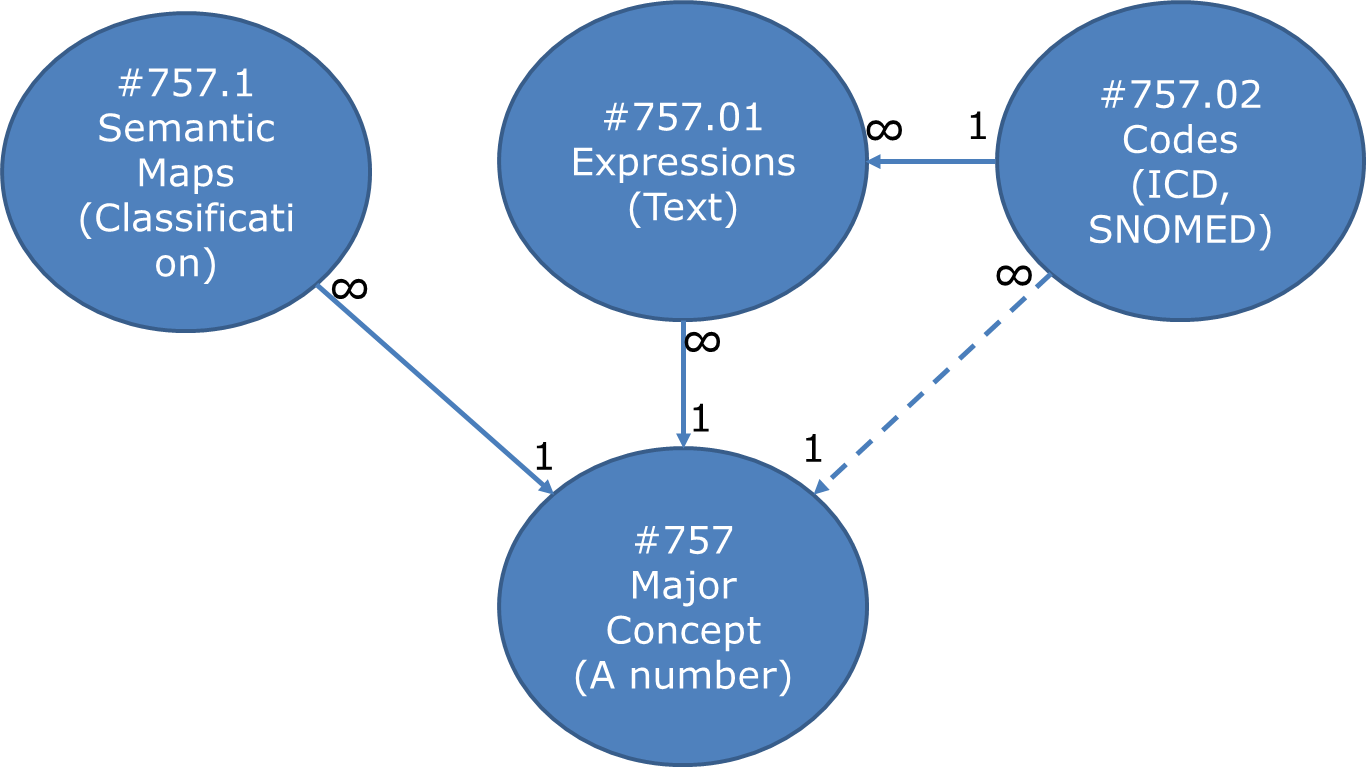
The dashed line between Codes and Major Concept says that there is a pointer connection between these files, but it's actually redundant as the same pointer can be found by going to the Expression file.
For comparison, on page 18 of the technical manual, you can find the more complex VA diagram, reproduced here:
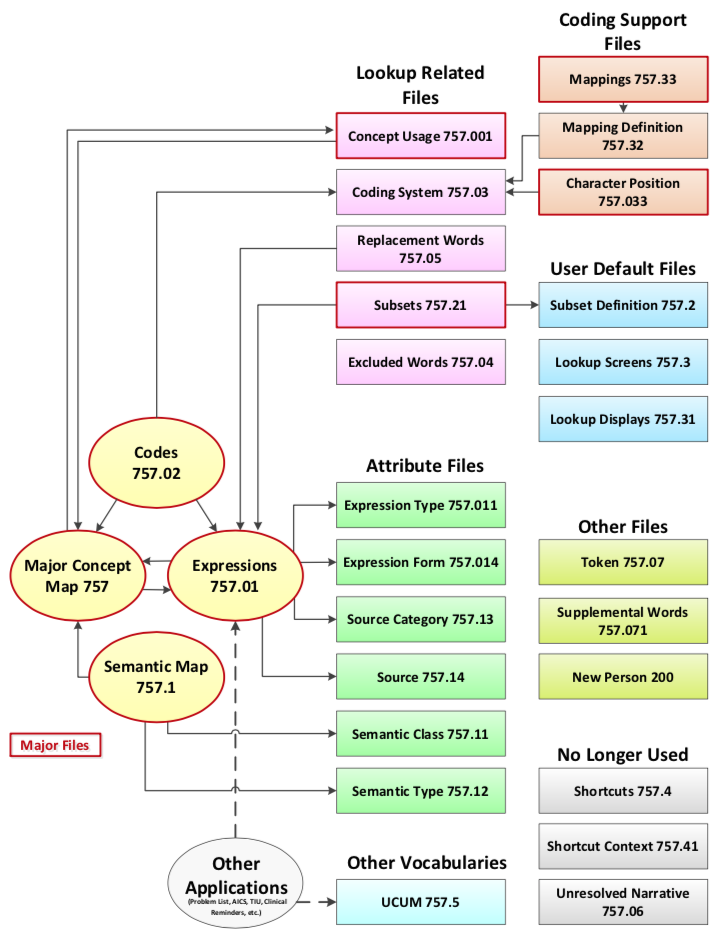
Here are three tables of the Anorexia concept that may be easier to understand; the codes table includes the code for each.
| IEN | Expression Text | Expression type |
|---|---|---|
| 7939 | Anorexia | Major Designation |
| 7940 | Food Appetite, decreased | Other Form |
| 7941 | Anorexias | Plural |
| IEN | Semantic Class | Semantic Type |
|---|---|---|
| 2510 | Disease/Pathological Process | Signs and Symptoms |
| 2511 | Disease/Pathological Process | Disease or Syndrome |
| IEN | Expression | Coding System | Code |
|---|---|---|---|
| 8461 | Anorexia (#7939) | AI/RHEUM | ANORX |
| 8462 | Anorexia (#7939) | COSTAR | U000037 |
| 8463 | Anorexia (#7939) | CRISP | 2116-3651 |
| 8464 | Anorexia (#7939) | COSTART | ANOREXIA |
| 8465 | Anorexia (#7939) | ICD-9 | 783.0 |
| 8468 | Anorexia (#7939) | SNOMED 2 | F-60014 |
| 8471 | Food appetite, decreased (#7940) | SNOMED 2 | F-60014 |
| 5021748 | Anorexia (#7939) | ICD-10 | R63.0 |
A couple of interesting asides: Only 1465/72819 US ICD-10 code entries in the Lexicon are actually shared with other coding systems; and this is even less for SNOMED-CT. I personally speculate that asserting relationships between various vocabularies just became too much of a burden for the terminologists at the VA when all the codes that were used were SNOMED-CT and ICD-10 were first loaded.
Second Attempt to Load ICD-10
Discussion
Rather than do the haphazard deletion technique used previously, to preserve existing relationships in the Lexicon, I would just delete codes in file 80 above 500,000 (ICD-10 codes); and all codes in the CODES files (757.02) that are marked as ICD-10 codes. Notice that we not deleting any of the associated codes in the other 757* files; these won't harm anything if they are left alone and nobody uses them. Ideally, I would look for all entries that nobody uses and then clean them up; but I imagine I would find a lot of interesting archaeology; so ultimately, it's not worth the time right now.
I never mentioned the Character Positions file before (757.003); this is used to categorize ICD-10 codes. I actually didn't know about it until this point in my research. I deleted the ICD-10 codes it from it, which were easy to identify as they were all labeled as "10D" in the NAME/.01 field.
Adding codes is done in two different steps. First, the straightforward loading of codes into file 80 and categories into file 753.033.
- 80 (ICD DIAGNOSIS): .01 (code); 1 (coding system); 66 (status); 67 (short description); 68 (long description)
- 757.033 (Character Positions) for ICD-10 Categories (소 in KCD7 spreadsheet): 01 (10D + code); .02 (code); .03 (date); .04 (coding system); 1 (status); 2 (name/title); 3 (description)
The second step is that we need to populate the other Lexicon files (757*). Previously, we created brand new entries in all files. However, we want to be true to the spirit of the Lexicon, and make sure that we create entries that will interoperate with the rest of the Lexicon. To do that, we now use the English text of the ICD from the KCD-7 spreadsheet to match to an existing expression in the Lexicon (file 757.01). If that exists, we use the Major Concept (757) and Semantic Class (757.1) associated with that. If not, we create brand new entries for the Major Concept (757) and Semantic Class (757.1) and English Expression (757.02). In both cases, we need to create the Korean Expression (757.02). The last item to create is the code. The code can be theoretically linked with either the English or Korean expression (as they are two separate entries pointing to the same Major Concept); but for this project I chose to point it to the Korean expression.
This all sounds too complicated. The source code for importing the KCD-7 spreadsheet I hope is understandable, and may be a better reference. Start with the ADDLEX tag.
Also, here's a table that shows the fields updated:
| File | Fields |
|---|---|
| 757 (Major Concept) | .01 (pointer to 757.01) |
| 757.001 (Concept Frequency) | .01 (pointer to 757); others |
| 757.01 (Expression) | .01 = text; 1 = p757 |
| 757.02 (Codes) | .01 = p757.01; 1 = code; 2 = coding system; 3 = p757; 8 = Activation History |
| 757.1 (Semantic Map) | .01 = p757; 1 = 6; 2 = 47 |
We end up reusing 1483 Expressions out of 19187 end user selectable codes in KCD-7. This is very close to the ICD-10-CM-US of 1465 of 72819.
The Tilde Bug
There is a standard technique of jumping forward in a M index by appending a tilde to the text you want, and then using $ORDER to move forwards in the index. It's easy to explain this using an example. Say you have the following entries:
- CALCIUM CARBONATE
- CALCIUM LACTATE
- CALCIUM SULFATE
- MAGNESIUM CARBONATE
If you know that "CALC" expands to CALCIUM only, and you want to skip it, you can append ~ to CALC to jump to the MAGNESIUM using $ORDER.
This trick is used in a few places in Fileman with comma searching (partial wildcard matching of entries).
This trick works only with ASCII. It works because the tilde is the last printable ASCII character, so ordering past it will get you the next higher character. This won't work for any non-ASCII data. What usually happens is that you go into an endless loop with non-ASCII data as you never get to the end of an index (~ with non-ASCII data moves you back, not forward, and you loop through the data again, add the tilde, and go back, and so forth).
Luckily, I found this problem while I was working for EHS in Jordan when we were implementing VistA there. George Timson fixed it by introducing a new DD("OS") node called "HIGHESTCHAR". Instead of a tilde, you are supposed to use ^DD("OS",^DD("OS"),"HIGHESTCHAR").
We found this issue in ONE^LEXAS2 and EXP^LEXAS6. They are now both fixed.
Random Pursued/Unpusued Fileman Indexing Bugs
I have had multiple issues where Fileman would not create certain indexes. One of them has been remedied in MSC Fileman (DIC variable is not defined for DBS calls); while another has not (conditional subfile whole file indexes don't seem to get fired). Both of them made me double check why my code didn't work, and I found out it's because an index was not created. This was apparently known to the Lexicon developer, as he explicitly re-indexes the Lexicon entries after he files them; which he shouldn't really have to do.
Screenshots
Here are some screenshots of the results of this work:
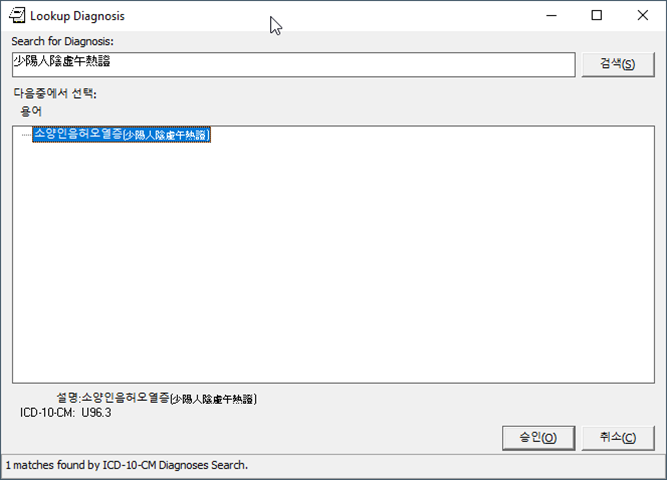
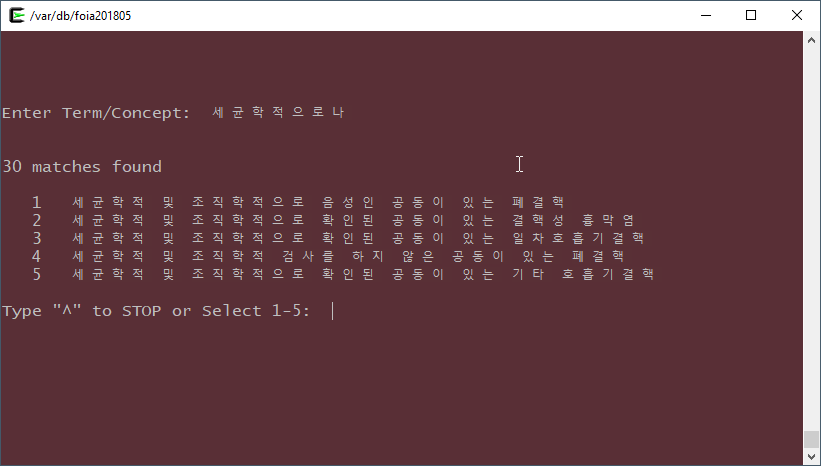
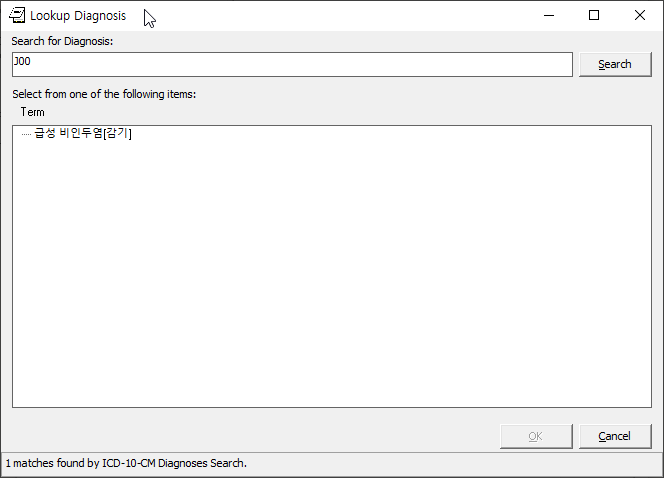
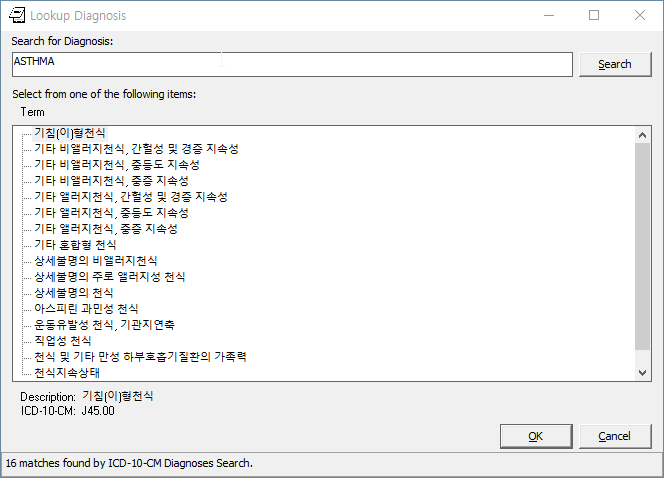
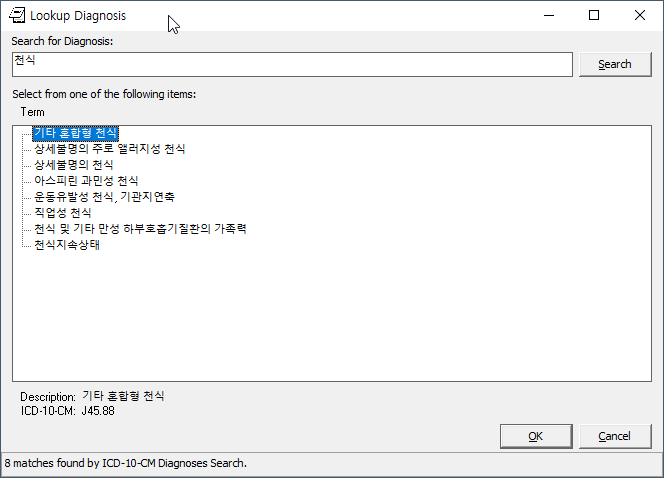
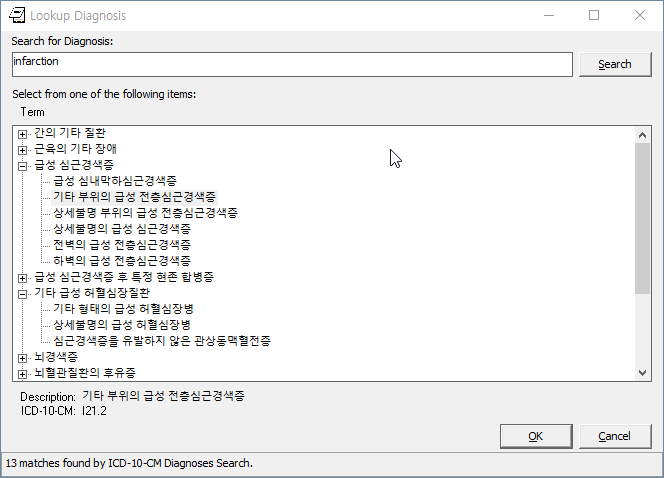
KIDS Build
In the section "How to Distribute the Lexicon", we saw how the VA distributed the Lexicon; and how I ended up distributing the first draft of my copy of the Lexicon. Ideally I would have liked to distribute my KIDS build almost the same way that the VA distributed their Lexicon; however, the VA distribution of the Lexicon only works well when you only need to go from one state of the Lexicon to the next (as the sets and kills are very specific to a previous state; i.e., specific to the cumulative effect of all the previously installed KIDS patches). However, I would want to my build to be generic: it should be able to go in regardless of your Lexicon patch level. In the end, I decided that I will simply ship the KCD-7 spreadsheet inside of the KIDS build and load the KCD-7 in the post install the same way I was loading it on my development computer. The KIDS build also contains both LEXAS routines that had the tilde bug fixed. You can find it here. The load takes about 10 minutes; most of the time is spent in the deletion of the US codes.
An Experiement: Loading KCD-7 as a Separate Terminology
Load Description
Due to community interest in being able to load a separate terminology into the Lexicon (such as DSM-5, which is not currently in the Lexicon), I decided to explore the possibility of loading KCD-7 as a Separate Terminology, rather than replacing the US ICD-10. The resulting routine can be found here.
The steps are as follows:
- Add Terminology Definition to CODING SYSTEMS (757.03)
- Add Categories (if applicable) to CHARACTER POSITIONS (757.033)
- Add User Selectable codes to the five main files discussed earlier: 757/757.001, 757.01, 757.02, 757.1. Use the Expression (English Text of the code (757.01) to decide if you can reuse the Major Concept (757) and Semantic Map entry (757.1) and the Expression itself (757.01). Otherwise, you will need to create all the entries in all five set of files.
Since with KCD-7 I had Korean text in addition to the English text, if I found an existing English language expression, I created a new Expression in Korean that was a synonym to the English expression. The Lexicon knows that the two expressions mean the same thing as they both point to the same major concept. The KCD-7 code in CODES (757.02) can point to either one--I made it point to the Korean Text.
Here's a table of the fields that got added/updated:
| File | Fields |
|---|---|
| 757.03 (Coding Systems) | .01 (Abbr); 1 (nomenclature); 2 (Source Title); 3 (Source); 4 (Active Codes); 5 (Codes); 11 (Implementation Date); 12 (Search Threshold) |
| 757.033 (Character Positions) | .01 (KCD7 + code); .02 (code); .03 (date); .04 (coding system); 1 (status); 2 (name/title); 3 (description) |
| 757 (Major Concept) | .01 |
| 757.001 (Concept Frequency) | .01 (pointer to 757); 1 = 6; 2 = 6 |
| 757.01 (Expression) | .01 = text; 1 = p757 |
| 757.02 (Codes) | .01 = p757.01; 1 = code; 2 = coding system; 3 = p757; 8 = Activation History |
| 757.1 (Semantic Map) | .01 = p757; 1 = 6 ; 2 = 47 |
Three Examples
Anorexia Nervosa was an existing English Expression. I created a Korean Synonym in the Expression file (757.01) and made the KCD-7 code point to it. Here's the output from LEX LOOK-UP:
TERMS:
Concept: Anorexia Nervosa
Major Concept
Synonym: Anorexia mentalis
Other Form
Synonym: 신경성 식욕부진
Other Form
Variant: Anorexia Nervosas
Plural Form
DEFINITION:
Syndrome marked by severe and prolonged loss of appetite with marked weight
loss and other symptoms resulting from emotional conflict.
SEMANTICS:
CLASS TYPE
Diseases/Pathologic Processes Disease or Syndrome
Mental or Behavioral Dysfunction
SOURCE CATEGORY: VBA
Service Connected Diagnosis
CLASSIFICATION SYSTEMS/CODES:
COSTAR Computer Stored Ambulatory Records Term File
U000038
COSTART Coding Symbols Thesaurus for Adverse Reaction Terms
ANOREXIA
CRISP Computer Retrieval of Info. on Scientific Projects
2483-6436
DSM-IIIR Diagnostic & Statistical Manual of Mental Disorders
307.10
DSM-IV Diagnostic & Statistical Manual of Mental Disorders
307.1
ICD-9-CM International Classification of Diseases, Diagnosis, 9th Ed
307.1
KCD-7 Korean ICD-10
F50.0
SNOMED 2 Systematized Nomenclature of Medicine
F-94800
TITLE 38 Service Connected Disabilities
9520
SUBSETS: Service Connected DisabilitiesSingleton born outside hospital was a brand new expression, so we created all the entries for it:
TERMS:
Concept: 병원 외부에서 출생한 단생아
Major Concept
Synonym: Singleton, born outside hospital
Other Form
SEMANTICS:
CLASS TYPE
Diseases/Pathologic Processes Disease or Syndrome
CLASSIFICATION SYSTEMS/CODES:
KCD-7 Korean ICD-10
Z38.1Singleton born in hospital was an existing SNOMED-CT expression:
TERMS:
Concept: Singleton liveborn born in hospital
Major Concept
Synonym: Singleton liveborn born in hospital
Other Form
Synonym: Singleton, born in hospital
Other Form
Synonym: 병원에서 출생한 단생아
Other Form
Specified: Singleton liveborn born in hospital (situation)
Fully Specified Name
SEMANTICS:
CLASS TYPE
Physical Objects Entity
CLASSIFICATION SYSTEMS/CODES:
KCD-7 Korean ICD-10
Z38.0
SNOMED CT SNOMED Clinical Terms
717803002
SUBSETS: Clinical FindingsTested APIs
$$ONE^LEXU, $$ALL^LEXU, $$IMPDATE^LEXU, $$CSYS^LEXU, $$CSDATA^LEXU, $$PAR^LEXU, $$EXP^LEXU, EXPS^LEXU, $$PERF^LEXU, EN^LEXCODE, $$EXP^LEXCODE, LOOK^LEXA
Here are some screen scrapes:
FOIA201805>W $$ONE^LEXU(410004618,DT,"KCD7")
F50.0
FOIA201805>W $$ALL^LEXU(410004618,DT,"KCD7")
FOIA201805>W $$IMPDATE^LEXU("KCD7")
2700000
FOIA201805>W $$CSYS^LEXU("KCD7")
58^KCD^KCD7^KCD-7^Korean ICD-10^Korea^19187^19187^^^^^2700000^20000
FOIA201805>W $$CSDATA^LEXU("Z38.0","KCD7",DT,.ARY)
1
FOIA201805>ZWRITE ARY
ARY("LEX",1)="410034542^병원에서 출생한 단생아"
ARY("LEX",1,"N")="IEN ^ Preferred Term"
ARY("LEX",2)="1^2700000"
ARY("LEX",2,"N")="Status ^ Effective Date"
ARY("LEX",3)="8679300^Singleton liveborn born in hospital"
ARY("LEX",3,"N")="IEN ^ Major Concept Term"
ARY("LEX",4)="8679301^Singleton liveborn born in hospital (situation)"
ARY("LEX",4,"N")="IEN ^ Fully Specified Name"
ARY("LEX",5)="Situation"
ARY("LEX",5,"N")="Hierarchy (if exists)"
ARY("LEX",6,0)=2
ARY("LEX",6,0,"N")="Synonyms and Other Forms"
ARY("LEX",6,1)="8695459^Singleton liveborn born in hospital"
ARY("LEX",6,2)="8695460^Singleton, born in hospital"
ARY("LEX",7,0)=1
ARY("LEX",7,0,"N")="Semantic Map"
ARY("LEX",7,1,1)="10^71"
ARY("LEX",7,1,1,"N")="Semantic Class ^ Semantic Type (internal)"
ARY("LEX",7,1,2)="Physical Objects^Entity"
ARY("LEX",7,1,2,"N")="Semantic Class ^ Semantic Type (external)"
ARY("LEX",8)=""
ARY("LEX",8,"N")="Deactivated Concept Flag"
ARY("SYS",1)="N/A"
ARY("SYS",2)="N/A"
ARY("SYS",3)="N/A"
ARY("SYS",4)="N/A"
ARY("SYS",5)="N/A"
ARY("SYS",6)="N/A"
ARY("SYS",7)="N/A"
ARY("SYS",8)="N/A"
ARY("SYS",9)="N/A"
ARY("SYS",10)="N/A"
ARY("SYS",11)="N/A"
ARY("SYS",12)="N/A"
ARY("SYS",13)="N/A"
ARY("SYS",14)="N/A"
FOIA201805>W $$PAR^LEXU("신경성 식욕부진",.ARY)
2
FOIA201805>ZWRITE ARY
ARY(0)=2
ARY(1)="신경성"
ARY(2)="식욕부진"
ARY("B","식욕부진")=3
ARY("B","신경성")=6
ARY("L",1)="식욕부진"
ARY("L",2)="신경성"
FOIA201805>W $$EXP^LEXU(410004618)
신경성 식욕부진
FOIA201805>D EXPS^LEXU(410004618,DT,.ARY)
FOIA201805>ZWRITE ARY
ARY(410004618)="신경성 식욕부진"
FOIA201805>W $$PREF^LEXU("Z38.0","KCD")
410034542^병원에서 출생한 단생아
FOIA201805>D EN^LEXCODE("Z38.1")
FOIA201805>ZWRITE LEXS
LEXS(0)="Z38.1"
LEXS("10D",0)=1
LEXS("10D",0,"SAB")="ICD-10-CM^International Classification of Diseases, Diagnos
is, 10th Edition"
LEXS("10D",1)="5062888^Single Liveborn Infant, Born outside Hospital"
LEXS("KCD",0)=1
LEXS("KCD",0,"SAB")="KCD-7^Korean ICD-10"
LEXS("KCD",1)="410034543^병원 외부에서 출생한 단생아"
FOIA201805>W $$EXP^LEXCODE("Z38.1","KCD")
410034543^병원 외부에서 출생한 단생아
FOIA201805>D LOOK^LEXA("신경성 식욕부진")
FOIA201805>ZWRITE LEX
LEX=3
LEX("EXC")="2^Anorexia Nervosa"
LEX("EXM")="1^신경성 식욕부진"
LEX("LIST",0)="3^3"
LEX("LIST",1)="410004618^신경성 식욕부진 *"
LEX("LIST",2)="7942^Anorexia Nervosa *"
LEX("LIST",3)="7349723^Atypical anorexia nervosa"
LEX("LVL")=1
LEX("MAT")="3 matches found"
LEX("MAX")=3
LEX("MIN")=1
LEX("NAR")="신경성 식욕부진"
FOIA201805>d LOOK^LEXA("신경성 식욕부진","LEX",5,"WRD",DT,"KCD","",1)
FOIA201805>zwrite LEX
LEX=3
LEX("EXC")="2^Anorexia Nervosa"
LEX("EXM")="1^신경성 식욕부진"
LEX("LIST",0)="3^3"
LEX("LIST",1)="410004618^신경성 식욕부진"
LEX("LIST",2)="7942^Anorexia Nervosa"
LEX("LIST",3)="7349723^Atypical anorexia nervosa"
LEX("LVL")=1
LEX("MAT")="3 matches found"
LEX("MAX")=3
LEX("MIN")=1
LEX("NAR")="신경성 식욕부진"
FOIA201805>zwrite ^TMP("LEXFND",$J,*)
^TMP("LEXFND",13180,0)="1.0220"
FOIA201805>zwrite ^TMP("LEXHIT",$J,*)
^TMP("LEXHIT",13180,0)=3
^TMP("LEXHIT",13180,1)="410004618^신경성 식욕부진"
^TMP("LEXHIT",13180,2)="7942^Anorexia Nervosa"
^TMP("LEXHIT",13180,3)="7349723^Atypical anorexia nervosa"
FOIA201805>K LEX d LOOK^LEXA("신경성","LEX",5,"WRD",DT,"KCD","",1)
FOIA201805>ZWRITE LEX
LEX=6
LEX("LIST",0)="5^5"
LEX("LIST",1)="410008900^달리 분류되지 않은 신경성 장"
LEX("LIST",2)="410004576^모든이에게 왜곡된 걱정거리를 제공하기 쉬운 예외적으로
위협적이거나 재난적인 자연의 상태(단기 또는 장기) 또는 근심에 늦게 반응하여 나타
나는 장애. 과거의 신경성 질환이나 인격적 특성(충박성, 쇠약성)이 증상의 발전 이나
경과의 악화 역치를 낮출 수 있지만, 질병의 발생을 충분히 설명할 수 없다. 전형적
양상은 방해적 기억 속에서 꿈과 악몽에서 외상의 반복적 재체험(과거의 재현)이며 외
상을 기억 나게 하는 활동 및 상황을 피하려는 지속적인 배경에 대하여 발생하는 “무
감각”이나 무딘 감성, 타인과의 분리, 주위환경에 대한 무관심, 쾌감 결여, 보통 자율
신경의 과도각성, 과도 경계 상태에 있으며 깜짝깜짝 놀라고 불면증에 시달린다. 불안
과 우울병도 잘 연관되나 자살관념은 흔하지 않다. 증상의 시작은 외상후 수 주 및 수
개월의 잠복기를 가지며 과정은 유동적이나 다수가 회복된다. 환자의 일부는 수년간
의 만성적 경과를 밟으며 인격변조(F62.0)의 과도기를 거친다."
LEX("LIST",3)="17407^Bulimia Nervosa"
LEX("LIST",4)="7942^Anorexia Nervosa"
LEX("LIST",5)="7349725^Atypical bulimia nervosa"
LEX("LVL")=1
LEX("MAT")="6 matches found"
LEX("MAX")=5
LEX("MIN")=1
LEX("NAR")="신경성"
FOIA201805>zwrite ^TMP("LEXFND",$J,*)
^TMP("LEXFND",13180,-1.022,7349723)="Atypical anorexia nervosa"
^TMP("LEXFND",13180,0)=4.1229
FOIA201805>zwrite ^TMP("LEXHIT",$J,*)
^TMP("LEXHIT",13180,0)=5
^TMP("LEXHIT",13180,1)="410008900^달리 분류되지 않은 신경성 장"
^TMP("LEXHIT",13180,2)="410004576^모든이에게 왜곡된 걱정거리를 제공하기 쉬운 예
외적으로 위협적이거나 재난적인 자연의 상태(단기 또는 장기) 또는 근심에 늦게 반응
하여 나타나는 장애. 과거의 신경성 질환이나 인격적 특성(충박성, 쇠약성)이 증상의
발전 이나 경과의 악화 역치를 낮출 수 있지만, 질병의 발생을 충분히 설명할 수 없다
. 전형적 양상은 방해적 기억 속에서 꿈과 악몽에서 외상의 반복적 재체험(과거의 재
현)이며 외상을 기억 나게 하는 활동 및 상황을 피하려는 지속적인 배경에 대하여 발
생하는 “무감각”이나 무딘 감성, 타인과의 분리, 주위환경에 대한 무관심, 쾌감 결여,
보통 자율신경의 과도각성, 과도 경계 상태에 있으며 깜짝깜짝 놀라고 불면증에 시달
린다. 불안과 우울병도 잘 연관되나 자살관념은 흔하지 않다. 증상의 시작은 외상후
수 주 및 수 개월의 잠복기를 가지며 과정은 유동적이나 다수가 회복된다. 환자의 일
부는 수년간의 만성적 경과를 밟으며 인격변조(F62.0)의 과도기를 거친다."
^TMP("LEXHIT",13180,3)="17407^Bulimia Nervosa"
^TMP("LEXHIT",13180,4)="7942^Anorexia Nervosa"
^TMP("LEXHIT",13180,5)="7349725^Atypical bulimia nervosa"
FOIA201805>D EN^LEXCODE("Z38.0")
FOIA201805>ZWRITE LEXS
LEXS(0)="Z38.0"
LEXS("KCD",0)=1
LEXS("KCD",0,"SAB")="KCD-7^Korean ICD-10"
LEXS("KCD",1)="410034542^병원에서 출생한 단생아"